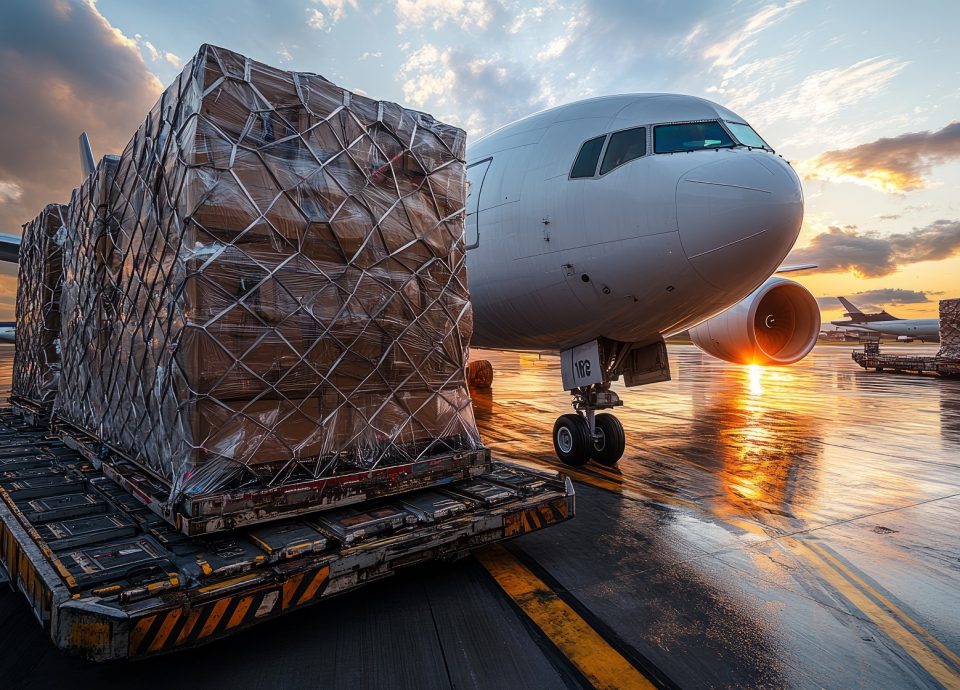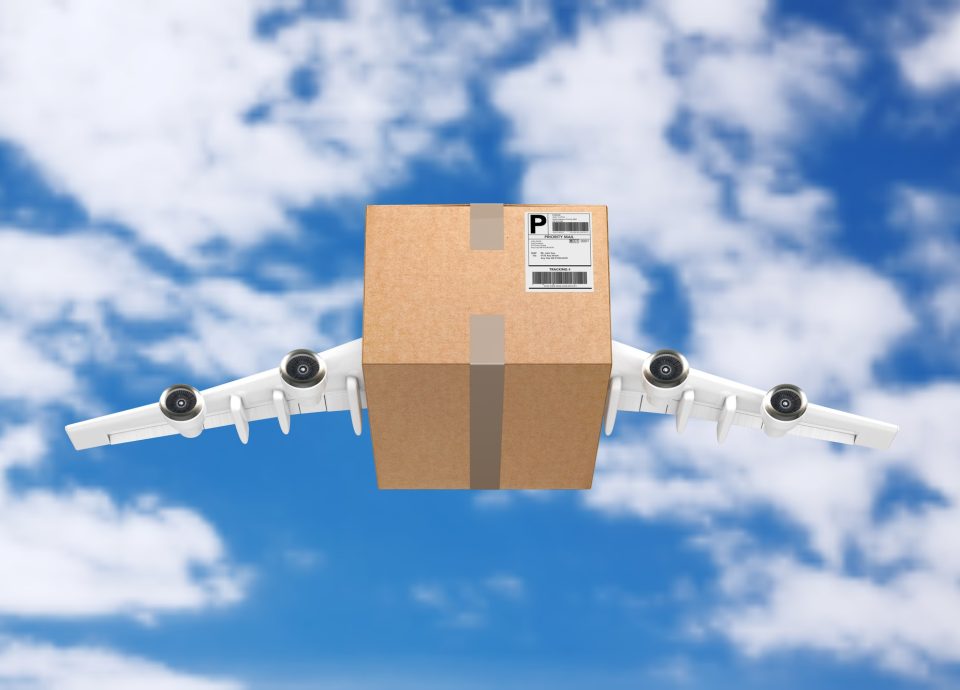Choosing the right provider can make or break your global supply chain. When deadlines are tight, customers are waiting, and inventory is moving across borders, you need more than a carrier—you need a strategic partner who understands compliance, capacity, and costs from end to end. This guide walks you through a practical framework to evaluate, shortlist, and select an air freight company that fits your routes, budget, and risk profile—so your shipments land on time with zero surprises.
Sprinter Emergency Transport Inc. has supported manufacturers, healthcare networks, technology firms, and retailers with mission-critical international moves for years. Drawing on that experience, we’ll show you exactly what to look for in a cargo provider, the red flags to avoid, and how to compare quotes apples-to-apples. You’ll also find an onboarding checklist, documentation tips, and government resources to keep every export and import compliant.
What an Air Freight Company Actually Does (and Why It Matters)
Core responsibilities you should expect
A dependable provider coordinates every stage of the air move—from pickup and export clearance to linehaul, arrival, import brokerage, and final delivery. Done right, you’ll see fewer handoffs, faster milestone updates, and quicker exceptions resolution.
Typical service stack
- Route design and capacity booking with airlines
- Packaging and dangerous goods guidance
- Export and import documentation preparation
- Cargo insurance options and risk management
- Real-time tracking and proactive alerts
- First-mile pickup and last-mile delivery coordination
When a logistics provider owns the process end-to-end, your team spends less time chasing updates and more time serving customers.
When an Air Freight Company Is the Smart Choice
Time sensitivity and value density
If the payload is urgent, perishable, high-value, or needed to prevent production downtime, a provider is likely the right lever. The speed differential versus ocean or deferred ground often offsets the higher per-kilo rate.
Distance and network coverage
For intercontinental lanes or remote destinations that require hub connections, a logistics provider with strong airline relationships and interline options will keep routings efficient and predictable.
Compliance complexity
Pharma, batteries, hazmat, and dual-use goods demand a compliance-minded cargo provider that understands IATA, TSA/Transport Canada, and CBSA rules—and can keep documentation airtight.
A Proven Framework to Select the Best Air Freight Company
1) Define success before you shop
Clarify your requirements up front:
- Target lanes, shipment frequency, and seasonality
- Service levels (next-flight-out, standard, charter)
- Commodity specifics (temperature control, DG, valuables)
- Must-have KPIs (on-time performance, milestone scan quality)
Spelling these out will help each logistics provider tailor a proposal you can actually compare.
2) Build a qualified shortlist
Seek referrals from peers and industry groups. Verify certifications (IATA, ISO, TAPA), financial stability, and cargo security credentials. Ask each provider how they source capacity when markets tighten.
3) Evaluate operational depth (not just sales promises)
Meet the operations team that will run your freight. Ask about their gateway locations, after-hours escalation process, and how they handle exceptions. A strong provider can explain how shipments are recovered when weather or ATC disruptions hit.
4) Map network and airline access
The best partner balances passenger belly capacity and dedicated freighters. Press each provider on their primary carriers per lane, block-space agreements, and charter access. Capacity strategy determines your resilience in peak season.
5) Compare pricing the right way
Look beyond the per-kilo rate. Insist on quotes that itemize:
- Pickup and delivery
- Fuel, security, screening, and terminal fees
- Airline surcharges and peak season adders
- Brokerage, duties and taxes handling, disbursement fees
A provider that prices transparently will save you from invoice surprises later.
6) Inspect the tech stack
You deserve milestone scans, EDI/API visibility, exception alerts, and POD capture without chasing. Ask how the provider integrates with your TMS/ERP and what data you’ll see in real time.
7) Test their compliance IQ
Walk through sample paperwork for your commodity and lanes. A quality provider will guide you on shipper’s letter of instruction, AWB accuracy, DG declarations, and country-specific requirements without hesitation.
8) Stress-test service with a pilot
Start with a controlled trial on one or two lanes. Measure on-time performance, dwell at gateways, customs cycle time, and responsiveness. Scale only after the provider proves consistency.
Documentation Essentials for International Air Moves
Must-have documents
- Commercial invoice and packing list
- Air Waybill (master and house, if consolidated)
- Certificates (origin, phytosanitary, MSDS, as needed)
- Export permits and import licenses (if applicable)
Accuracy tips that prevent delays
- Match declared values, HS codes, and piece counts across all docs
- Use complete consignee details and tax IDs
- Confirm Incoterms and payer of charges before tender
- Keep serial/lot numbers handy for inspections
For reference and self-education:
- Transport Canada’s Air Cargo Security Program
- Canada Border Services Agency commercial importing guide
A process-driven provider will validate each document to minimize customs holds.
How to Compare Quotes from Each Air Freight Company (Apples to Apples)
Break costs into buckets
- Origin: pickup, screening, terminal handling
- Linehaul: base rate, fuel, security, airline surcharges
- Destination: terminal, clearance, delivery, disbursements
Normalize assumptions
- Same chargeable weight method (dim vs. actual)
- Identical service level and transit time window
- Same liability and insurance coverage
- Identical pickup/delivery parameters (accessorials)
Ask each provider to commit to a service window and escalation path if it slips. Consistent assumptions are the only way to judge value fairly.
Risk Management With the Right Air Freight Company
Insurance and liability
Carrier liability is limited. Confirm your provider offers cargo insurance options that cover full invoice value, including freight. Understand exclusions (improper packing, inherent vice) before you sign.
Security and chain of custody
A strong cargo provider follows tamper-evident procedures, screened cargo programs, and controlled dock access. Audit their facilities and partner warehouses; ask for their last security inspection report.
Contingency planning
What happens if a flight cancels? Your provider should have pre-arranged alternates, ground expedite options, and charter access—plus a clear communication cadence while they recover the shipment.
Sustainability and the Modern Air Freight Company
Practical steps that reduce footprint
- Consolidation programs to lift load factors
- Newer aircraft and SAF (sustainable aviation fuel) participation
- Optimized routings and reduced dwell times
Ask how the provider reports emissions (CO₂e per shipment) and whether they support offset or insetting programs that align with your ESG goals.
Red Flags When Vetting an Air Freight Company
- Vague pricing with “to be determined” fees
- No 24/7 escalation or single point of contact
- Limited airline access on your primary lanes
- Weak or manual milestone visibility
- Overpromising transit times without capacity to back it up
- Thin compliance answers for DG, lithium batteries, or pharma
- Avoidance when you ask for references or KPI dashboards
One or two red flags may be manageable; a cluster is a sign to keep looking for another provider.
Quick Ways to Vet an Air Freight Company
- Call customer support after hours—see who answers.
- Ask for three references from your industry and region.
- Request a sample exception report and escalation chain.
- Tour their gateway facility or meet their ground handler.
- Compare two months of live tracking screenshots.
- Review a real invoice and audit trail from quote to billing.
- Ask how they recovered a shipment during last peak season.
- Test their knowledge on your commodity’s special rules.
- Verify their insurance certificate and limits.
- Confirm data security practices and API documentation.
If a provider can demonstrate all ten, you’re likely dealing with a high-performing partner.
Building a Multimodal Strategy With Your Air Freight Company
Blending speed and cost
A sophisticated air freight company can combine services: next-flight-out for production-critical parts, standard air for routine replenishment, and deferred or ocean for long-horizon inventory—all within one playbook.
Linehaul + last-mile orchestration
Tight handoffs at the destination are essential. Your air freight company should have bonded cartage options, white-glove delivery for high-value goods, and customs-cleared cross-dock capacity to reduce dwell.
Technology You Should Expect From an Air Freight Company
Visibility and alerts
You should see flight numbers, ETD/ETA, customs status, exception codes, and POD in one portal. The best air freight company provides automated alerts and configurable dashboards.
Integration readiness
Ask for APIs or EDI specs for bookings, status, and invoicing. A tech-forward air freight company will connect to your ERP/TMS so operations and finance aren’t rekeying data.
Analytics and KPI reporting
Monthly scorecards should include on-time performance, dwell by gateway, exception root causes, and spend by lane. Insights separate a transactional carrier from a strategic air cargo provider.
Onboarding Plan: How to Launch With a New Air Freight Company
Phase 1 – Setup
- NDA and MSA
- Credit application and billing rules
- Contact matrix and escalation tree
- Data exchange (API/EDI) and portal logins
Phase 2 – Pilot
- Pick two lanes and service levels
- Define KPIs and reporting cadence
- Conduct post-mortems for each move
Phase 3 – Scale
- Add lanes and commodities
- Quarterly business reviews
- Continuous improvement roadmap
A structured rollout helps your air freight company learn your business and deliver consistency faster.
Why Choose Sprinter Emergency Transport Inc.
Sprinter Emergency Transport Inc. blends deep operational expertise with a practical, data-driven approach to air logistics. We partner with organizations that need certainty under pressure—where a missed connection isn’t an option.
What you can count on
- Priority access to capacity across leading global airlines
- 24/7 operations with a named escalation manager on every file
- Next-flight-out, standard, and charter solutions tailored per lane
- Bonded cartage and white-glove delivery for sensitive cargo
- Robust compliance for DG, lithium batteries, and pharma
- API/EDI visibility, proactive exception alerts, and KPI scorecards
- Transparent pricing with line-item detail—no invoice surprises
If you want an air cargo provider that treats every shipment like it’s critical, our team is ready to help.
Turning a Supply-Chain Emergency Into a Win
A Tier-1 auto supplier faced a line-down risk after a European vendor missed a component handoff. We designed a next-flight-out solution with a split-shipment strategy, clearing customs pre-arrival through data sharing and arranging bonded cartage on wheels. The plant avoided a shutdown, and the customer re-ordered a standing capacity block. The lesson: the right air freight company turns volatility into resilience.
Turn Your Carrier Into a Competitive Advantage
International logistics rewards preparation, transparency, and the right partners. By following this framework—defining success, vetting rigorously, and piloting before scaling—you’ll select a provider that protects delivery promises, cash flow, and customer trust.
Sprinter Emergency Transport Inc. is ready to build that partnership with you. Tell us your lanes and deadlines; we’ll show you a smarter way to move. Request a tailored plan and quote today—and turn your air program into a true edge.Frequently Asked Questions (FAQs)
1) How many carriers should I evaluate before choosing an air freight company?
Shortlist at least three. Comparing multiple proposals reveals differences in capacity strategy, fees, and visibility tools—so the selected air freight company doesn’t just look cheapest on paper but performs in real life.
2) What certifications should an air freight company hold?
Look for IATA accreditation, relevant ISO standards, and security credentials aligned with Transport Canada’s Air Cargo Security Program. A certified air freight company reduces your compliance risk.
3) How do I compare quotes from each air freight company fairly?
Normalize assumptions—chargeable weight, service level, pickup/delivery, surcharges, and insurance. Then evaluate the air freight company on both total landed cost and promised transit window.
4) Can one air freight company manage customs at destination?
Yes. Many partners coordinate with licensed brokers or offer integrated brokerage. Confirm who files entries, advances duties/taxes, and manages exams so your air freight company keeps cycle time tight.
5) What KPIs should I track with my air freight company?
On-time performance, gateway dwell, exception rate, milestone scan compliance, and invoice accuracy. A disciplined air freight company will review these KPIs with you in monthly or quarterly business reviews.
6) When does chartering make sense with an air freight company?
Charters work for outsized freight, full-plane volume, or hard deadlines when scheduled capacity is tight. Your air freight company should present charter, partial charter, and back-to-back options with costs and timelines.
7) How does Sprinter Emergency Transport Inc. differ from a typical air freight company?
We combine priority capacity access, 24/7 operations, rigorous compliance, and API-level visibility with transparent pricing. The result is a partner that behaves like an extension of your team rather than a transactional provider.




